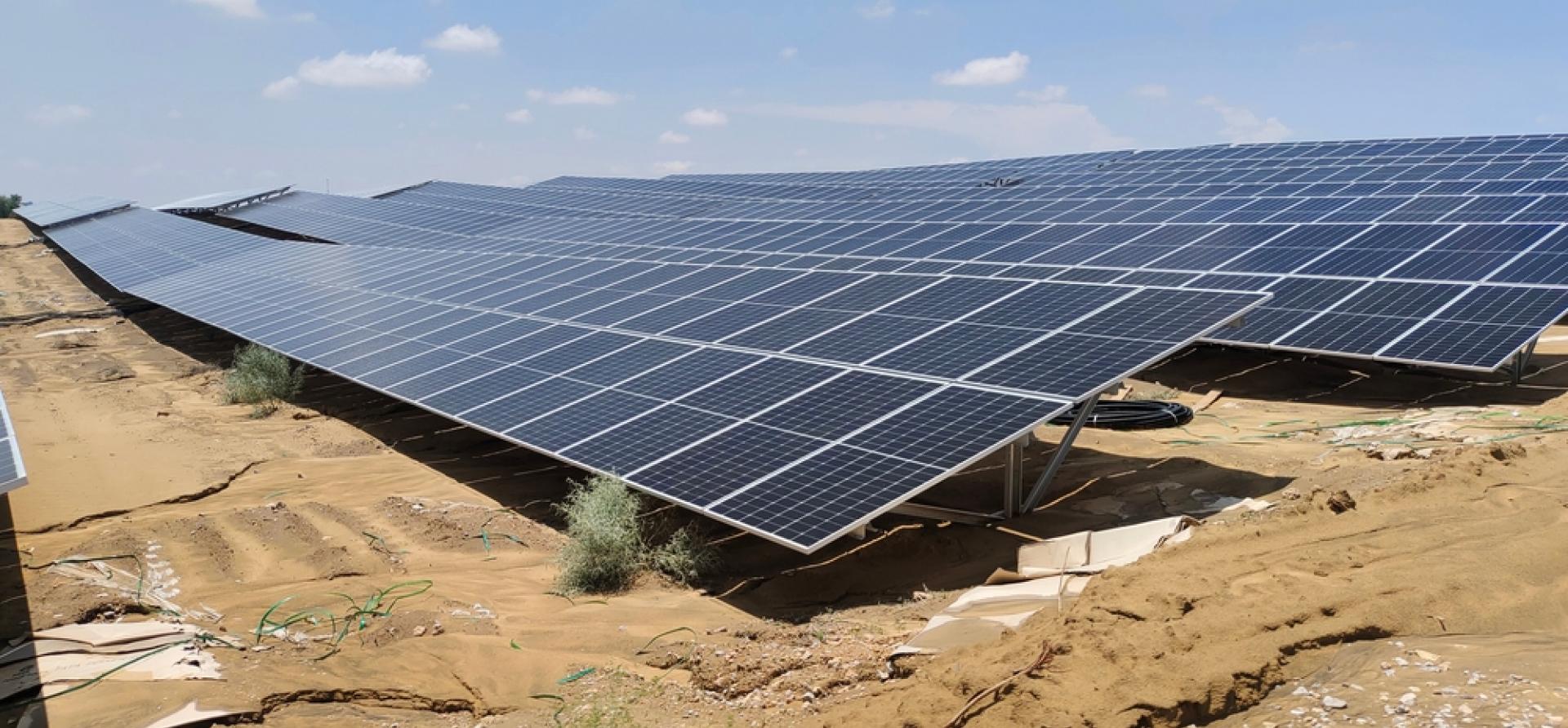
Key Findings
Accounting for India’s economic slowdown in FY2019/20, exacerbated by the COVID-19 pandemic in 2020/21, we project Rajasthan’s electricity production requirements to grow by just 42% over the next decade, from 81TWh in FY2019/20 to 115TWh FY2029/30.
We expect a dramatic shift in Rajasthan's electricity sector generation composition with renewables forming 74% of capacity and 63% of total generation by FY2029/30.
IEEFA recommends retiring the state’s old-technology-based, end-of-life coal-fired plants, and we model a net reduction in coal capacity of 0.7GW by FY2029/30.
Executive Summary
Rajasthan is a renewable energy leader in India and at the end of the last financial year it had a total of 9.6 gigawatts (GW) of renewable energy capacity installed. It also added more solar power capacity (1.7GW) in financial year (FY) 2019/20 than any other Indian state. Karnataka (1.4GW) was next, followed by Tamil Nadu (1.3GW).
Home to the world’s largest operational utility-scale solar park in Bhadla, Rajasthan is a solar energy transition leader and is attracting massive ongoing new investment in renewables and supporting grid infrastructure, as well as associated manufacturing opportunities.
Renewable energy formed 43.5% of Rajasthan’s total installed capacity and 18% of its total on-grid generation in FY2019/20.
The state has 9.8GW of coal-fired capacity, which makes up 45% of total installed capacity and produces 56.5% of its total on-grid generation.
Roughly 95% of Rajasthan’s coal-fired capacity tariffs are above Rs4/kWh. Moreover, even its lowest tariff, for 3.4GW of coal-fired capacity, is contracted at Rs3.1-3.6/kWh – 30-50% higher than the lowest solar tariff of Rs2.36/kWh discovered in the Solar Energy Corporation of India’s (SECI) 2GW auction in June 2020.
The combination of expensive thermal tariffs and extremely high AT&C losses have put tremendous financial pressure on Rajasthan’s state-owned power distribution companies (discoms). The Rajasthan discoms booked a loss of Rs6,355 crore (US$900 million) in FY2019/20 after accounting for state government subsidies.
Now is the time for Rajasthan to transform its electricity sector to a low-emission, low-cost, modern renewable energy-based system.
The state government should take proactive measures to fully utilise Rajasthan’s solar energy potential, to help lift the economy out of the current downturn and build interstate export revenues to sustainably grow its GDP.
In this report, we model Rajasthan’s electricity sector’s generation mix out to FY2029/30.
Accounting for India’s economic slowdown in FY2019/20, exacerbated by the COVID-19 pandemic in 2020/21, we project Rajasthan’s electricity production requirements to grow by just 42% over the next decade, from 81TWh in FY2019/20 to 115TWh FY2029/30. This growth rate is well below any forecasts set even two years ago.
We also expect a dramatic shift in its electricity sector generation composition with renewables forming 74% of capacity and 63% of total generation by FY2029/30.
Our model incorporates a forecast total of 22.6GW of renewable energy to be added to Rajasthan’s grid. This consists of 18GW of new solar capacity, of which 3GW is forecast to be distributed solar capacity. We estimate solar will supply 98% of the incremental electricity demand by FY2029/30; and that 4GW of new onshore wind power capacity will serve 45% of the incremental demand.
IEEFA recommends retiring the state’s old-technology-based, end-of-life coal-fired plants, and we model a net reduction in coal capacity of 0.7GW by FY2029/30.
As discoms look to cater to their incremental demand through cheaper renewable energy sources, coal-fired plants will progressively lose out on market share to about 28% compared to FY2019/20 or 13TWh by FY2029/30.
Even with net coal capacity closures over the coming decade, we forecast the coal- fired power sector’s utilisation rates will drop to 41% in FY2029/30 from an already unsustainably low 55% in FY2019/20.















